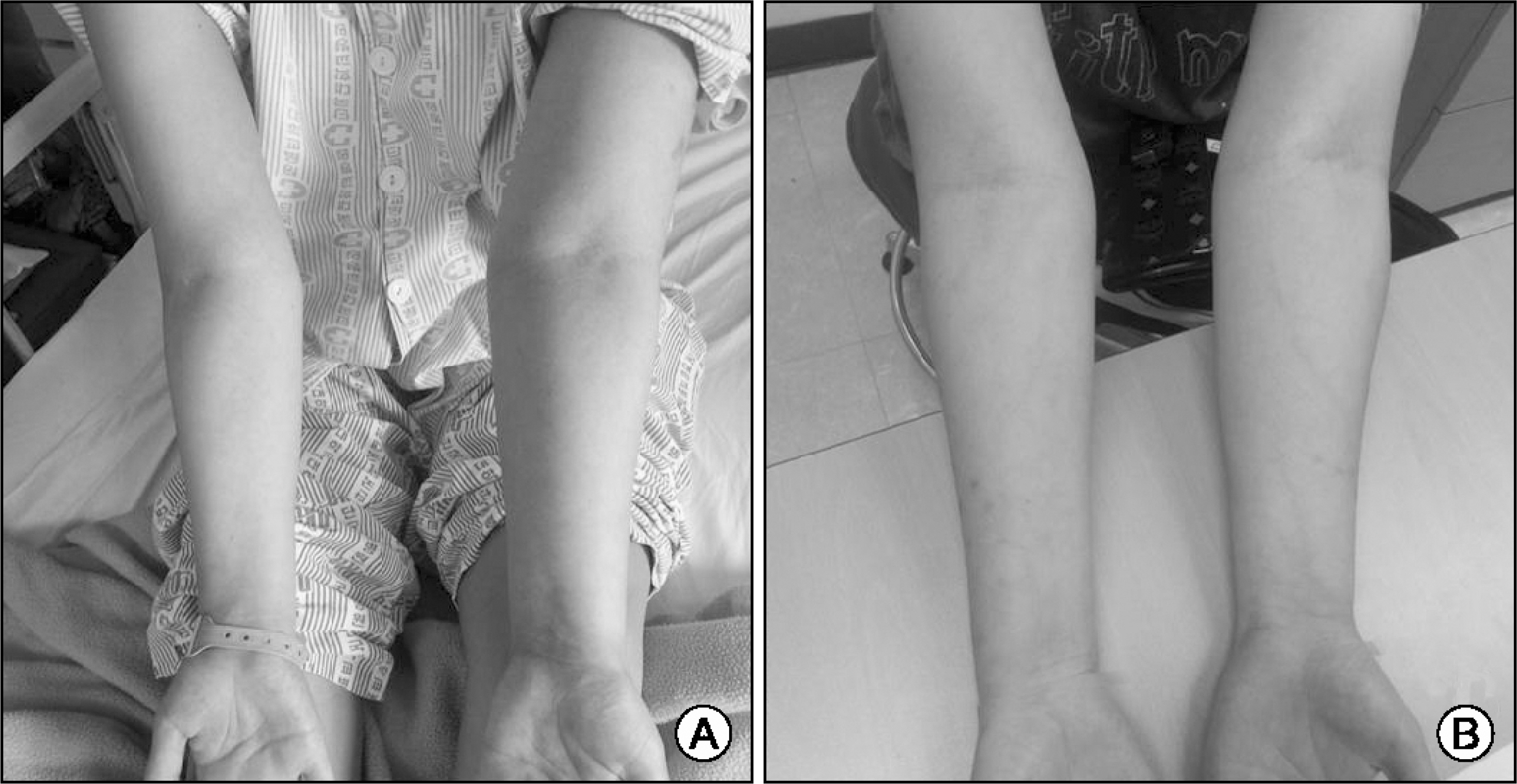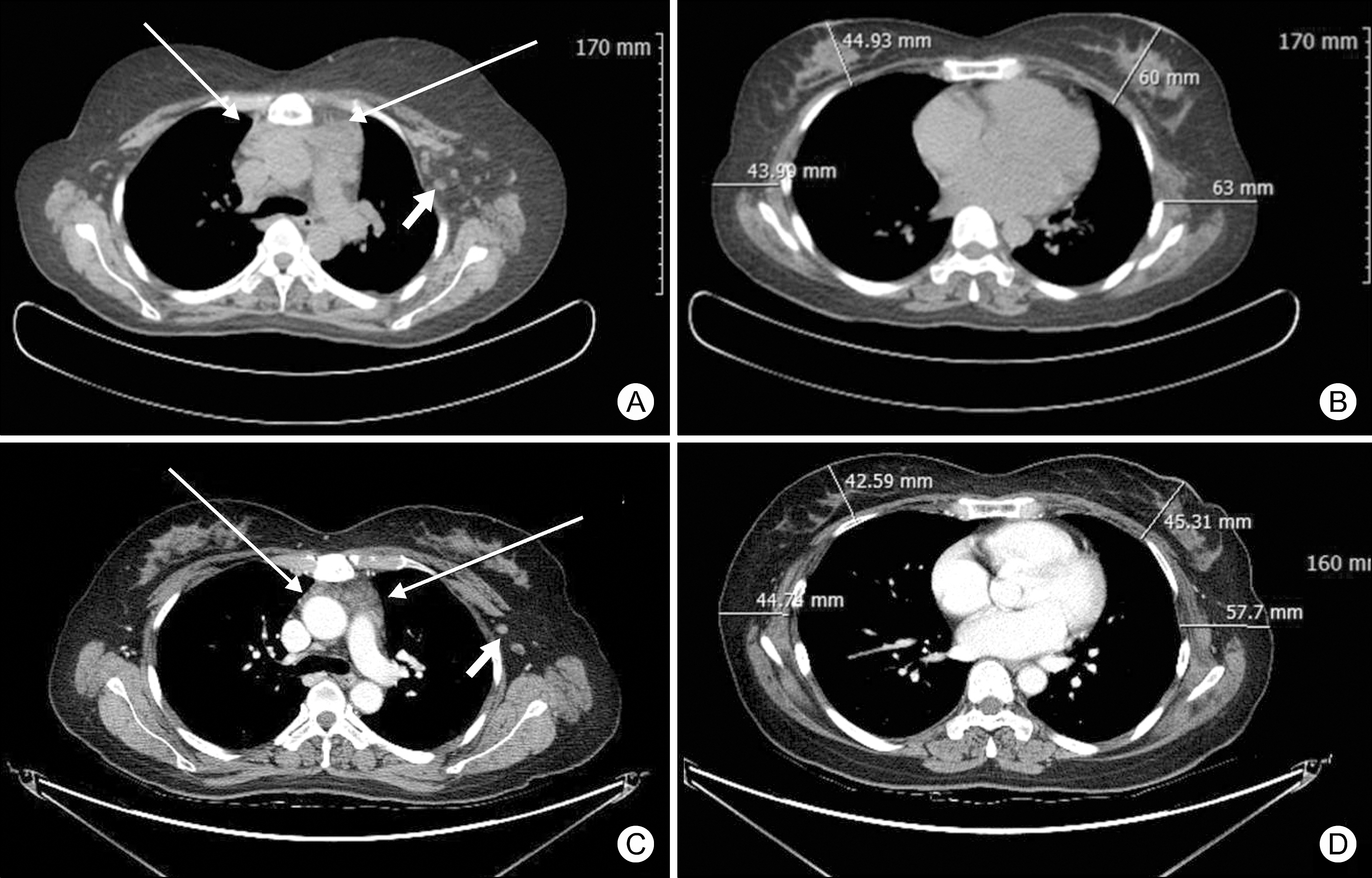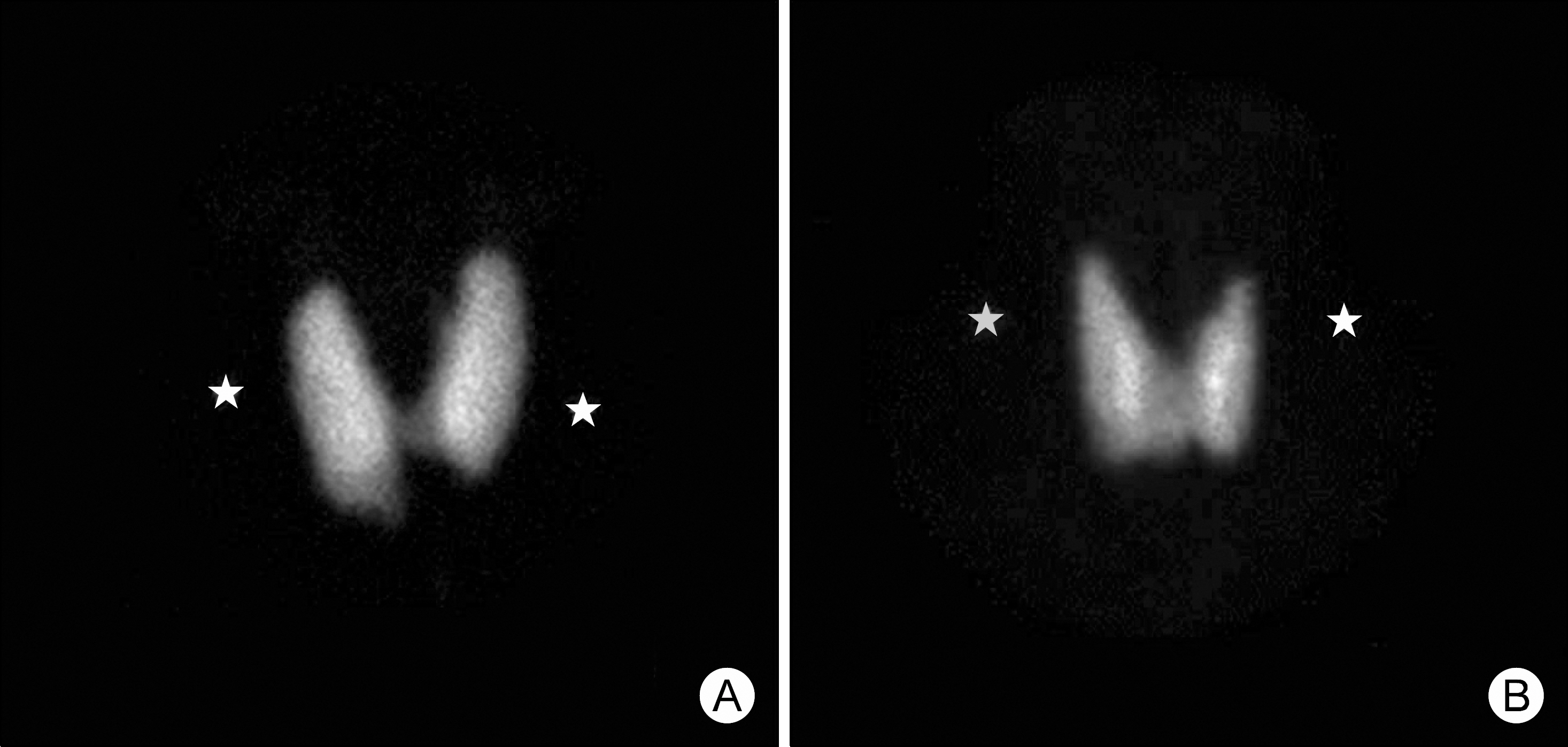Int J Thyroidol.
2016 Nov;9(2):174-179. 10.11106/ijt.2016.9.2.174.
Two Cases of Graves' Disease Presented with Atypical Symptoms
- Affiliations
-
- 1Department of Internal Medicine, Dankook University Medical College, Cheonan, Korea. chkendo@dankook.ac.kr
- KMID: 2362354
- DOI: http://doi.org/10.11106/ijt.2016.9.2.174
Abstract
- We describe here two Graves' patients who have presented with atypical symptoms. Interestingly, both of them had symptoms related to imbalance of body fluid homeostasis. Chief complaint of a 35-year-old woman (case 1) was the ipsilateral edema of upper body. A 33-year-old man (case 2) who had severe polyuria has referred from urology department with impression of diabetes insipidus. Both of them denied any typical symptoms of Graves' disease at presentation. These rare extrathyroid manifestations of Graves' disease were completely subsided after antithyroid drug treatment. We introduce their clinical courses and possible pathophysiological mechanisms of the atypical symptoms of Graves' disease.
Keyword
MeSH Terms
Figure
Reference
-
References
1. Yi KH, Moon JH, Kim IJ, Bom HS, Lee J, Chung WY, et al. The diagnosis and management of hyperthyroidism consensus – report of the Korean Thyroid Association. J Korean Thyroid Assoc. 2013; 6(1):1–11.
Article2. Friedman IH. Edema as a presenting symptom of hyperthyroidism. N Y State J Med. 1965; 65:1798–801.3. Volke V, Matjus S. Unilateral pitting edema of the leg as a manifestation of Graves' disease: a case report. J Med Case Rep. 2012; 6:258.
Article4. Wang Y, Zhao L, Li F, Chen HX, Fang F, Peng YD. Unilateral gynecomastia and hypokalemic periodic paralysis as first manifestations of Graves' disease. Am J Med Sci. 2013; 345(6):504–6.
Article5. Davies TF. Trauma and pressure explain the clinical presentation of the Graves' disease triad. Thyroid. 2000; 10(8):629–30.
Article6. Rapoport B, Alsabeh R, Aftergood D, McLachlan SM. Elephantiasic pretibial myxedema: insight into and a hypothesis regarding the pathogenesis of the extrathyroidal manifestations of Graves' disease. Thyroid. 2000; 10(8):685–92.
Article7. Alsanea O, Clark OH. Treatment of Graves' disease: the advantages of surgery. Endocrinol Metab Clin North Am. 2000; 29(2):321–37.
Article8. Savino W, Dardenne M. Neuroendocrine control of thymus physiology. Endocr Rev. 2000; 21(4):412–43.
Article9. Yamazaki M, Sato A, Nishio S, Uehara T, Komatsu M. Transient polyuria related to central diabetes insipidus caused by lymphocytic infundibulo-neurohypophysitis in a patient treated for Graves' disease. Intern Med. 2010; 49(17):1885–90.
Article10. Evered DC, Hayter CJ, Surveyor I. Primary polydipsia in thyrotoxicosis. Metabolism. 1972; 21(5):393–404.
Article
- Full Text Links
- Actions
-
Cited
- CITED
-
- Close
- Share
- Similar articles
-
- A Case of an Elderly Graves’ Patient with Fatal Pulmonary Embolism
- Two Cases of Postpartum Thyroiditis Followed by Graves' Disease
- A Case of Pulmonary Hypertension Recurred by Graves' Disease
- A Case of Graves' Disease Following Subacute Thyroiditis Presented with Creeping
- Graves’ Disease Following Subacute Thyroiditis




